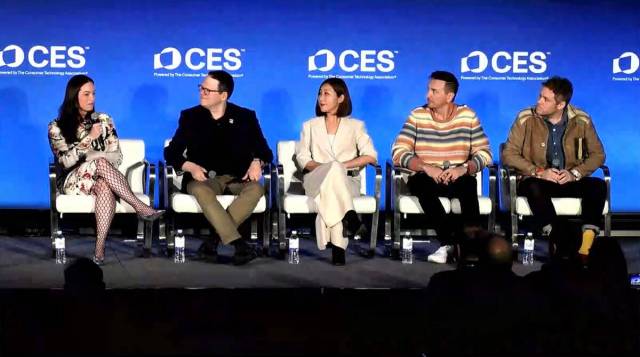
CES 2025, one of the most influential technology events in the world, was held at the Las Vegas Convention Center, the Mandalay Bay Convention Center, The Venetian Convention and Expo Center and 12 other venues. The event showcased the latest innovations in technology available to the movie industry. This is especially important to the local business climate since Sony Pictures and Warner Bros. are planning to build movie studios in Southern Nevada with the potential to create thousands of jobs, generate a possible billion-dollar economic impact and diversify the economic landscape.
Sony Pictures Entertainment President and CEO Ravi Ahuja, joined by Co-Editor-in-Chief at Variety Cynthia Littleton, spoke during CES about Sony Pictures Entertainment’s position in the industry landscape. Sony Pictures Entertainment staked out a strategy of being a content provider instead of developing a streaming service, except for Crunchyroll, a streaming service featuring anime, manga and other East Asian media.
The nature of consumption is changing with each generational audience.
“We’re an independent studio, and we sell content to people, but I think that each of our segments is actually the same segments every media company has. We have a film studio, we have TV studios, we have direct-to-consumer in Crunchyroll, and we have an experiences division now, so we have the same things everyone else has,” Ahuja said. “I thought it was a great decision — not to do what everyone else was doing, a general entertainment streaming service, but instead to focus on a particular area where we could be different.”
It has been reported that Sony Pictures Entertainment’s $1.8 billion studio will be located at Town Center Drive near I-215 Beltway and will be backed by writer, actor and producer Mark Wahlberg. The studio could spend about $270 million per year on production projects.
During CES, representatives from NBCUniversal, Disney, Warner Bros. Discovery and SAG-AFTRA took part in a technology discussion. There is a strong desire for traditional media companies to collaborate with tech companies for the latest technological advancements. As theatrical box office sales and linear television viewership continue to decline, and layoffs persist in reducing the industry’s workforce, technology offers a hopeful perspective, despite its complexities and the different culture compared to Hollywood.
Michael Kassan, the former head of MediaLink, returned as the panel moderator and connector through his new company, 3C Ventures. Jeffrey Katzenberg, known for his startup Quibi to disrupt the streaming platform format, opened OpenAP’s Audience Summit. This half-day event featured high-level executives, including Krishan Bhatia (Amazon), Jeff Collins (Fox Corp.), and Donna Speciale (TelevisaUnivision). The panel spoke about the challenges and opportunities presented by streaming content.
The significant impact of artificial intelligence (AI) on entertainment content brought several industry leaders to discuss AI applications in filmmaking, including dialogue generation and realistic digital humans.
Leslie Silverman, head of new technology at United Talent Agency, moderated the panel. Duncan Crabtree-Ireland, national executive director and chief negotiator of SAG-AFTRA represents talent in the industry. Animation director Momo Wang directed the AI film “Until We Meet Again,” selected by China National Film Museum to broadcast. Nik Kleverov, chief creative officer at Native Foreign, represents a creative agency that works with AI. Director Walter Woodman works at sky kids, a production company, creative and filmmaking collective based in Toronto. The company is best known for creating the film “Airhead,” which was the first kind of short film made with OpenAI’s Sora video model. Wang and Kleverov also produced content for Sphere Las Vegas.
“One of the interesting things is that what the AI tools let us creatives do is explore ideas that have been locked in a vault or just not able to be made, especially with shoestring budgets. I’ve just delved into ideas I’ve had for a long time and started to bring them to life. One of the pieces is a film called “Critters” that we made … almost two years ago, using Dolly to generate these images of forest critters, bringing them to life. I think the fun thing about that is it was a lot of humans using the tools to bring a vision to life,” Kleverov said. “I see the future as a hybrid approach of using the tools and human creativity together.”
A film made by Native Foreign was nominated for the PGA Innovation Award, competing against large corporations, including Marvel and ILM, with a piece created by a dozen people.
Although AI presents opportunities, its use also raises concerns about job security for creative professionals and ethical issues surrounding copyright and data usage. However, the consensus at CES was optimistic about using AI as a tool to enhance storytelling as it is integrated into the creative process.